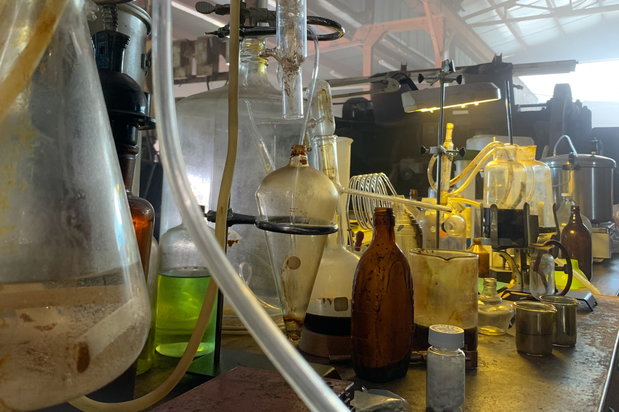Methamphetamine has been a dark and powerful force in addiction and the drug underworld for decades, with meth use in America exploding alongside internet use during the 1990s. Recipes for home production became readily available online, and consequently, many home and mobile labs exploded, as did related media coverage.
Meth misuse has ravaged the lives of millions of Americans and continues to do so today. Meth—or crystal meth—lost its place in the news spotlight during the rise of the opioid crisis. However, home meth labs and small-time dealers in the US are being overshadowed by streamlined lab production in Mexico, as well as a new and extremely pure form of meth known as Meth 2.0.
Methamphetamine Use Disorder
Approximately 964,000 Americans aged 12 and older had a meth use disorder in 2017, according to the 2017 National Survey on Drug Use and Health (NSDUH). Factors related to meth use that were analyzed in the survey included disability, health complications, and failure to meet commitments at home, work, or school, as well as other indicators of physical, mental, and emotional impairment. This number rose significantly from 2016 when 684,000 reported having a methamphetamine use disorder.
In addition, the prevalence of meth use in the US continues to be a concern for organizations like the National Institute on Drug Abuse (NIDA), whose National Drug Early Warning System (NDEWS) tracks drug use trends. The most recent NDEWS reported that overdose deaths due to the methamphetamine category of drugs rose 7.5 times from 2007 to 2017, with an estimated 15 percent of all drug overdose deaths falling under the category that includes meth.
Meth's Impact
A common perception associated with meth use might include visions of a home lab deep in the woods or a seedy, trashed out dope-house that mars a suburban neighborhood. However, meth production has risen to a whole new level by Mexican drug cartels, who run specialized labs producing Meth 2.0, a form of the drug that is reported to be 97 percent pure and is relatively cheap.
Despite meth being viewed by many as a lower priority and less risky than opiates, this new and improved form of the drug may overtake opiates in overdoses and deaths. Meth 2.0 contributed to nearly 30 deaths in 2018, an increase from 7 in 2017.
Meth's New Face
Put simply, Meth 2.0 could contribute to highly dangerous situations reminiscent of Breaking Bad, where the purity and ease of mass production, along with affordability, make addiction and deaths eminent. "These Mexican labs are making a very pure methamphetamine," explained Tim Lohmar, the Prosecuting Attorney in St. Charles County, Missouri, according to The Daily Mail. "They can mass-produce the meth and distribute it at a reduced price, which consequently has led to a rise in local consumption."
Lohmar also warned of the extreme risks of overdose and death associated with Meth 2.0, which often combines meth with other lethal substances such as fentanyl. “It’s a lot like Breaking Bad… the ease of the mass production is what made it so addictive and relatively cheap,” said Lohmar.
Although the opioid epidemic is still of urgency, the number of deaths has started to plateau, meaning they're not increasing at the rate they have been over the past several years. However, everyone these days knows about the opioid crisis. Conversely, methamphetamine deaths are on the rise.
From 1999 to 2009, opioid overdose deaths rose from 3,400 to 13,500, according to a Stateline data analysis from the US Centers for Disease Control and Prevention, and overdose deaths due to methamphetamine rose from 2,600 to 10,300 from 2012 to 2017. Although true that meth users are less likely to die from overdose than those addicted to opiates, those unable to kick a meth addiction suffer from a combination of factors that cause both mental and physical decay and can lead to serious health issues and even death.
Implications for Treatment
The most prevalent obstacle in the treatment of meth addiction is there not being any medications that can ease the withdrawal process beyond buprenorphine and methadone (both opiates themselves) or Vivitrol, which blocks the effects of opiates. Those withdrawing from methamphetamine addiction experience symptoms, such as itching, irritability, and extreme cravings. In addition, withdrawal symptoms may include severe anxiety, hallucinations, and paranoia.
After the initial crash, cravings increase dramatically, depending on the length and severity of use. There is no medication that can ease these intense cravings, so other forms of treatment have to be applied in the hopes they can help meth addicts manage this stage of overwhelming cravings until they begin to subside. Unfortunately, this stage can last 30 weeks or longer.
The drug war will always prove unwinnable. Therefore, it's more important than ever for meth addiction to be seen as a health issue, as opposed to a criminal one. Meth production is moving from rural trailer park labs to mass production in its heretofore purest form. As such, many prognosticators fear that Meth 2.0 will continue the societal destruction caused by the evergrowing opioid epidemic. This is of the utmost importance when considering the opportunity to give addicts every chance to keep themselves out of the legal system. Without action, Meth 2.0 will continue to impact communities already ravaged by the current opioid epidemic.
|
If you or someone you know is seeking help from addiction, please visit our directory of treatment centers or call 800-891-8171 to speak to a treatment specialist. |








